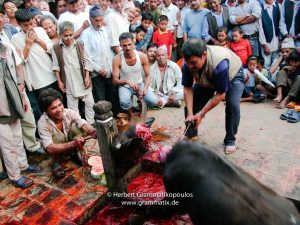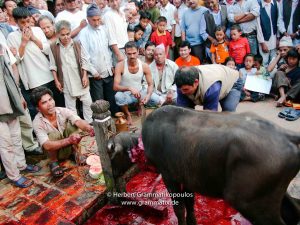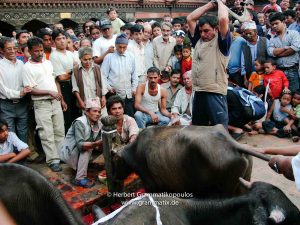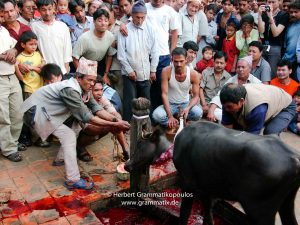III. Religious rites
III.a. Bhairab Dancers Triptychon
III.b. Several Religious Rites & Scenes
III.c. Rigon Tashi Choeling Monastery Inauguration
III.d. Bhog ceremony on the 9th day of Dashain
III.a. The Bhairab Dancers Triptychon
Bhaktapur is also known as the ‘capital of cultural dances and cultural music’. Among many traditional cultural dances of Bhaktapur, mask dances are one of the most popular. And among these masked dances the ‘Bhairav Pyakhan’ or ‘Bhairav Dance’ is the most popular one.
Almost all of the traditional dances follow some kind of legend and traditional beliefs and same with the “Bhairava Pyakhan” or “Bhairava Dance”. The legend behind the “Bhairav Dance” goes as follows. Hundreds of years back, the evil forces and beings, ‘Bhoot’, ‘Pisach’ and ‘Rakshasa’, started to dominate the world. The evil beings, ‘Daityas’ started destroying humans and the natural balance was threatened. Then the god “Bhairava” came down to Earth with other divine bodies to destroy those evil beings for restoring peace and to maintain the natural balance.
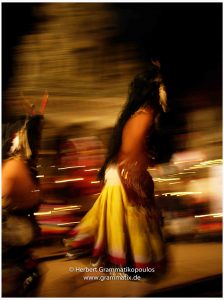
Nepal, Bhairav Dance 1
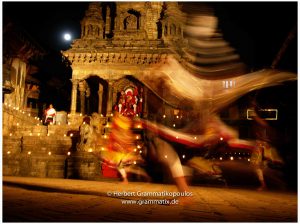
Nepal, Bhairav Dance 2
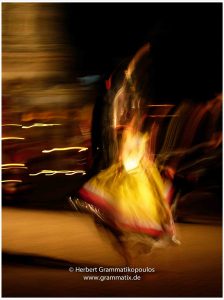
Nepal, Bhairav Dance 3
III.b. Several Religious Rites & Scenes
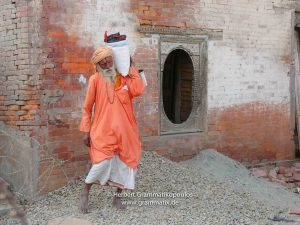
Nepal, Kathmandu, Pashupatinath Temple: A Sadhu on his way to the banks of the Bagmati river with the Gaths on the occasion of Shiva Rathi’s night
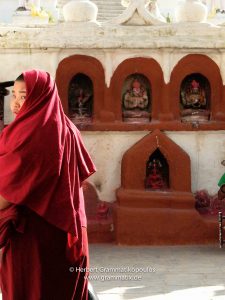
Nepal, Kathmandu, Bouddha: Glimpse next to Ajima Shrine (at the northern stairs of the Stupa)
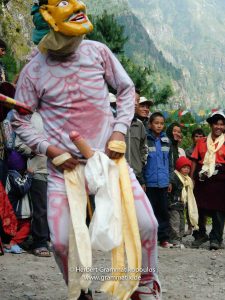
Nepal, Manang, Chame: The tantric „Lakhe“-dance, part of the inauguration ceremony of the annual „Yarthong“-festival; in the mainstreet
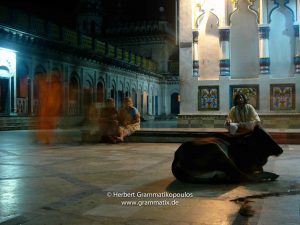
Nepal, Janakpur, Janaki Mandir: Holy cow and blessing pilgrims in front of the main temple at night; 4th day of Dashain
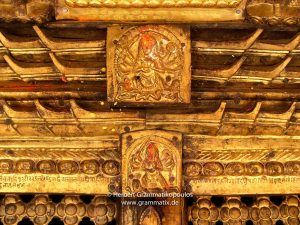
Nepal, Bhaktapur: Changu Narayan Temple; Detail an der mittleren Tür des goldenes Portal des Chinni Masta, wieder mit der 8-händigen Gottheit und einer Kette vonTotenköpfen im Türrahmen , vgl. Bild L1040495
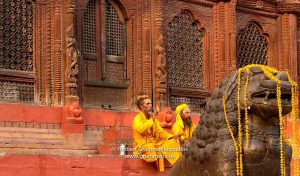
Nepal, Kathmandu, Durbar Square: Saddhus vor dem Shiva-Parvati-Tempel am Durbar Square
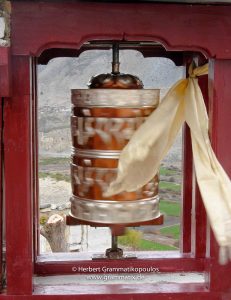
Nepal, Lower Mustang, Jomson-Thini: Prayerwheel near Thini
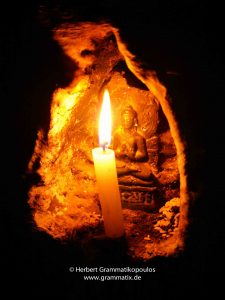
Nepal, Kathmandu, Bouddhanath: Candels illuminating the little Buddha statues on the toplevel of the big stupa
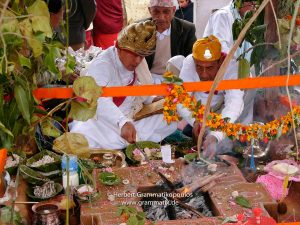
Nepal, Tansen: Priester im buddh. Bihar unterhalb des Bazar während der „ihi“-Initiation
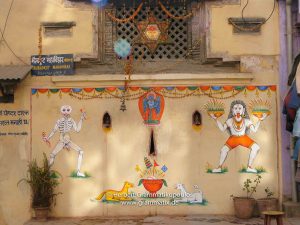
Nepal, Patan, Ga Bahal: Tibetischer Bhairakut Mahavihar Tempel an der Hauptstrasse von Pulchowk zum Durbar Square (rechts, etwa auf halbem Weg); vgl. Photo L1120377
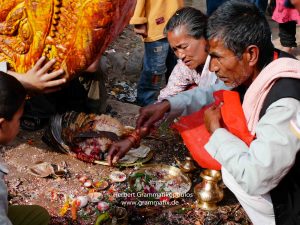
Nepal, Bhaktapur: „Bisket Jatra“, cellebrations to the Newari New Year. A family doing a ceremony and offering a chicken
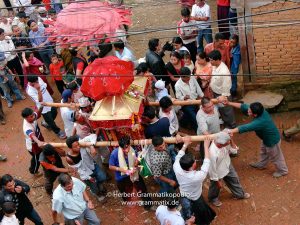
Nepal, Pharping: Sänfte mit einer Krishnafigur bei der Prozession der Frauen an Krishnas Geburtstag, laut Berichten, um einen netten Mann zubekommen. man beachte den Jung, der an der Sänfte hängt, v.a. beim folgenden Bild 795
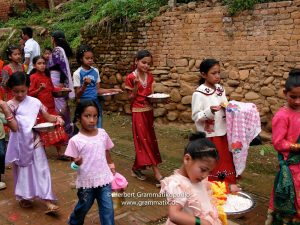
Nepal, Pharping: Prozession der Frauen und Mädchen an Krishnas Geburtstag, laut Berichten, um einen netten Mann zu bekommen
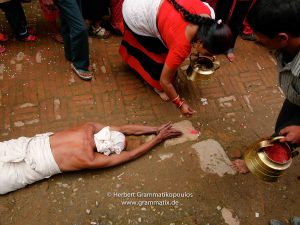
Nepal, Pharping: Dieser Mann legt den Weg nach Dakshinkali in Körperlängen zurück, ob als Buse oder um Etwas zu erbitten, war nicht in Erfahrung zu bringen. Sein Weg wirdgereinigt und gesegnet
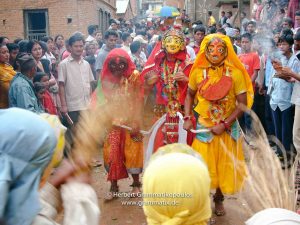
Nepal, Pharping, Gaai Jaatraa: Nachdem ein Priester die 6qm geweiht hat, vollführen nun die Trancetänzer ihr Ritual. Im Vordergrund vertreiben die Jungs mit Besen den Unbill der Götter, vgl. Bilder 602,615,620,624,626 und 635
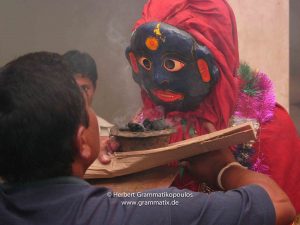
Nepal, Pharping, Lake Jatra: Ein Zeremonienmeister versetzt die Tänzer, die Götter (Brahma, Vishnu und?) darstellen, mit Rauch von Essenzen und Massagen in Trance. Im Bild schwarzee Maske soll wohl „Bhairab“ sein (Putting a dancer in to trance)
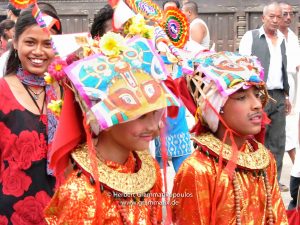
Nepal, Kathmandu, Durbar Square, Gaai Jaatraa: Momentaufnahme am dem Maju Deval
III.c. Rigon Tashi Choeling Monastery Inauguration in Dallu, Pharping
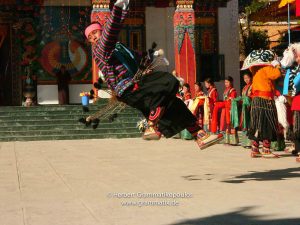
The seventh dance of the inauguration ceremony
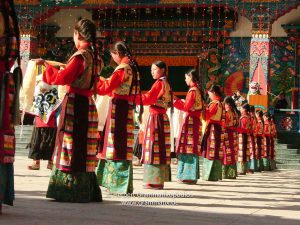
A ceremony inside the inauguration ceremony
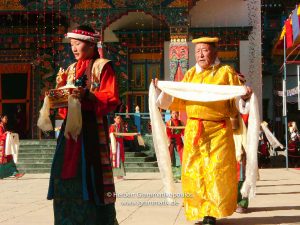
A ceremony inside the inauguration ceremony
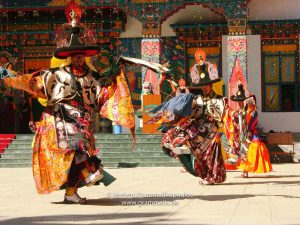
The second dance of the inauguration ceremony
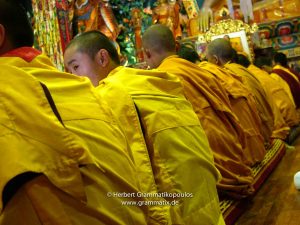
Monks during the auguration of the monastery
III.d. Bhog ceremony on the 9th day of Dashain
Nepal, Patan, Durbar Square, Mulchowk, 9.th day of dashain: Bhog ceremony, a Hindu ritual, where dozends of animals, mostly goats and buffalos are slaughtered (compare to Gadhimai animal sacrifice festival in Bariyarpur, Bara District, south of KTM (attends every five years – in 2009 on November 24 and 25), worlds largest animal sacrifice festival with about 200.00 slaughered buffalos, chicken, goats. Banned in July 2015 by the Gadhami Temple Commitee)
